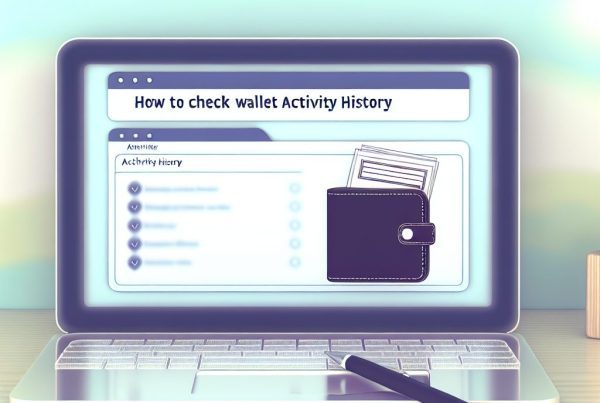How to Set Up a Cold Wallet for Cryptocurrency
As the cryptocurrency market continues to grow, securing your digital assets has never been more crucial. One of the most effective ways to protect your cryptocurrencies is by using a cold wallet. This article will guide you through the process of setting up a cold wallet, ensuring that your investments remain safe from online threats.
What is a Cold Wallet?
A cold wallet, also known as a cold storage wallet, is a type of cryptocurrency wallet that is not connected to the internet. This disconnection from the web makes cold wallets significantly less vulnerable to hacking and cyber attacks compared to hot wallets, which are online and more accessible. Cold wallets can take various forms, including hardware wallets, paper wallets, and even air-gapped computers.
Why Use a Cold Wallet?
There are several compelling reasons to use a cold wallet for your cryptocurrency storage:
- Enhanced Security: Cold wallets are immune to online threats, making them a safer option for long-term storage.
- Ownership Control: You have complete control over your private keys, reducing the risk of third-party interference.
- Long-Term Storage: Ideal for investors who plan to hold their cryptocurrencies for an extended period.
- Protection Against Exchange Failures: Storing your assets offline protects you from exchange hacks and failures.
Types of Cold Wallets
Before setting up a cold wallet, it’s essential to understand the different types available:
1. Hardware Wallets
Hardware wallets are physical devices designed to securely store your private keys offline. Popular options include:
- Ledger Nano S/X: Known for their robust security features and user-friendly interfaces.
- Trezor: Offers a simple setup process and supports a wide range of cryptocurrencies.
2. Paper Wallets
A paper wallet is a physical document that contains your public and private keys. It can be generated offline and printed out, making it a secure option if handled correctly. However, it’s crucial to keep it safe from physical damage and theft.

3. Air-Gapped Computers
Using a dedicated computer that has never been connected to the internet can serve as a cold wallet. This method requires more technical knowledge but offers a high level of security.
How to Set Up a Cold Wallet
Setting up a cold wallet involves several steps, depending on the type you choose. Below, we’ll outline the process for hardware wallets and paper wallets.
Setting Up a Hardware Wallet
Follow these steps to set up a hardware wallet:
- Purchase a Hardware Wallet: Buy a reputable hardware wallet from an official source to avoid counterfeit products.
- Install the Wallet Software: Download the official software from the manufacturer’s website. Ensure you are on the correct site to avoid phishing scams.
- Initialize the Wallet: Connect the hardware wallet to your computer and follow the on-screen instructions to set it up. This usually involves creating a PIN and writing down a recovery seed phrase.
- Transfer Cryptocurrency: Once set up, you can transfer your cryptocurrencies from exchanges or other wallets to your hardware wallet’s address.
Setting Up a Paper Wallet
To create a paper wallet, follow these steps:
- Use a Secure Generator: Visit a trusted paper wallet generator like Bitaddress.org. Ensure you are offline when generating your wallet.
- Generate Your Keys: Move your mouse around the screen to create randomness, then generate your wallet. This will provide you with a public address and a private key.
- Print Your Wallet: Print the wallet and store it in a safe place. Consider using a fireproof and waterproof safe for added protection.
Best Practices for Using Cold Wallets
To maximize the security of your cold wallet, consider the following best practices:
- Backup Your Wallet: Always create multiple backups of your recovery seed phrase or private keys and store them in different secure locations.
- Keep Your Wallet Offline: Ensure that your cold wallet remains disconnected from the internet at all times.
- Use Strong Passwords: If your wallet has a password feature, use a strong, unique password.
- Regularly Update Your Software: Keep your wallet software updated to protect against vulnerabilities.
Common Mistakes to Avoid
When setting up and using a cold wallet, avoid these common pitfalls:
- Neglecting Backups: Failing to back up your recovery seed phrase can lead to permanent loss of access to your funds.
- Using Untrusted Sources: Always download wallet software from official websites to avoid malware.
- Sharing Your Private Key: Never share your private key with anyone; it grants full access to your funds.
Real-World Use Cases of Cold Wallets
Cold wallets have been utilized by various individuals and organizations to secure their cryptocurrency holdings. For instance, major exchanges like Binance and Coinbase often recommend cold storage for large amounts of cryptocurrency to protect against hacks. Additionally, institutional investors, such as Grayscale, use cold wallets to safeguard their substantial crypto assets.
In 2021, a notable case involved the theft of $600 million worth of cryptocurrency from Poly Network. The incident highlighted the importance of cold storage, as many investors turned to cold wallets to protect their assets from similar threats.
Frequently Asked Questions (FAQs)
What is the difference between a hot wallet and a cold wallet?
A hot wallet is connected to the internet, making it more convenient for transactions but also more vulnerable to hacks. In contrast, a cold wallet is offline, providing enhanced security for long-term storage.
Can I use a cold wallet for daily transactions?
While it is possible to use a cold wallet for transactions, it is not practical for daily use due to the need to connect to the internet for transfers. Hot wallets are better suited for frequent transactions.
How do I recover my funds if I lose my cold wallet?
If you lose your cold wallet but have backed up your recovery seed phrase, you can recover your funds by using that phrase in a compatible wallet software.
Are cold wallets completely safe?
While cold wallets offer superior security compared to hot wallets, they are not entirely risk-free. Physical damage, theft, or loss of the recovery seed phrase can lead to loss of access to your funds.
Conclusion
Setting up a cold wallet is an essential step for anyone serious about securing their cryptocurrency investments. By understanding the different types of cold wallets and following best practices, you can significantly reduce the risk of losing your digital assets. Whether you choose a hardware wallet, paper wallet, or air-gapped computer, the key is to prioritize security and control over your private keys.
For the latest news and updates in the cryptocurrency world, consider visiting Bitrabo. Stay informed and protect your investments wisely!
Follow me on social media for more insights: X, Instagram, Threads.
Disclaimer: This article is for informational purposes only and should not be considered financial advice. Always do your research before making any investment decisions.
The Crypto Watchlist of the Week 🔎
Subscribe to receive expert-curated projects with real potential—plus trends, risks, and insights that matter. Get handpicked crypto projects, deep analysis & market updates delivered to you.


